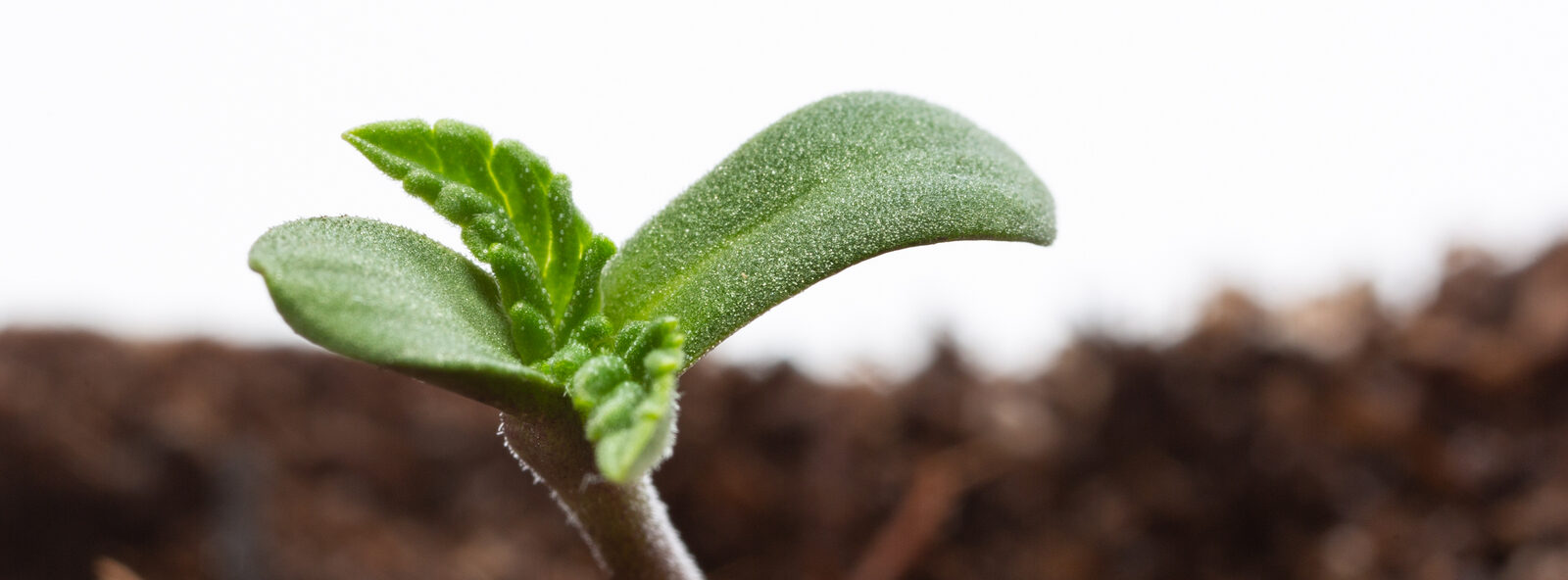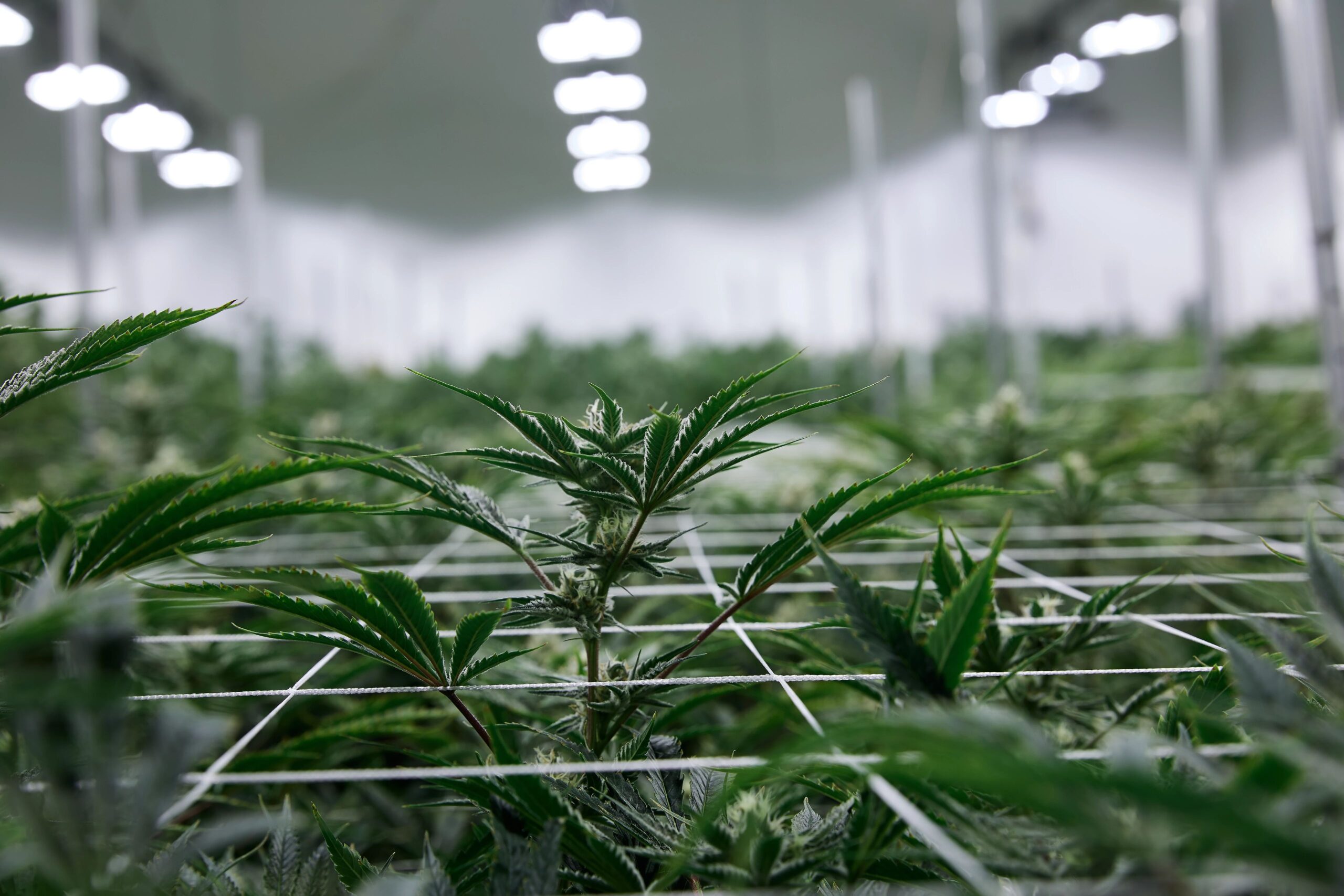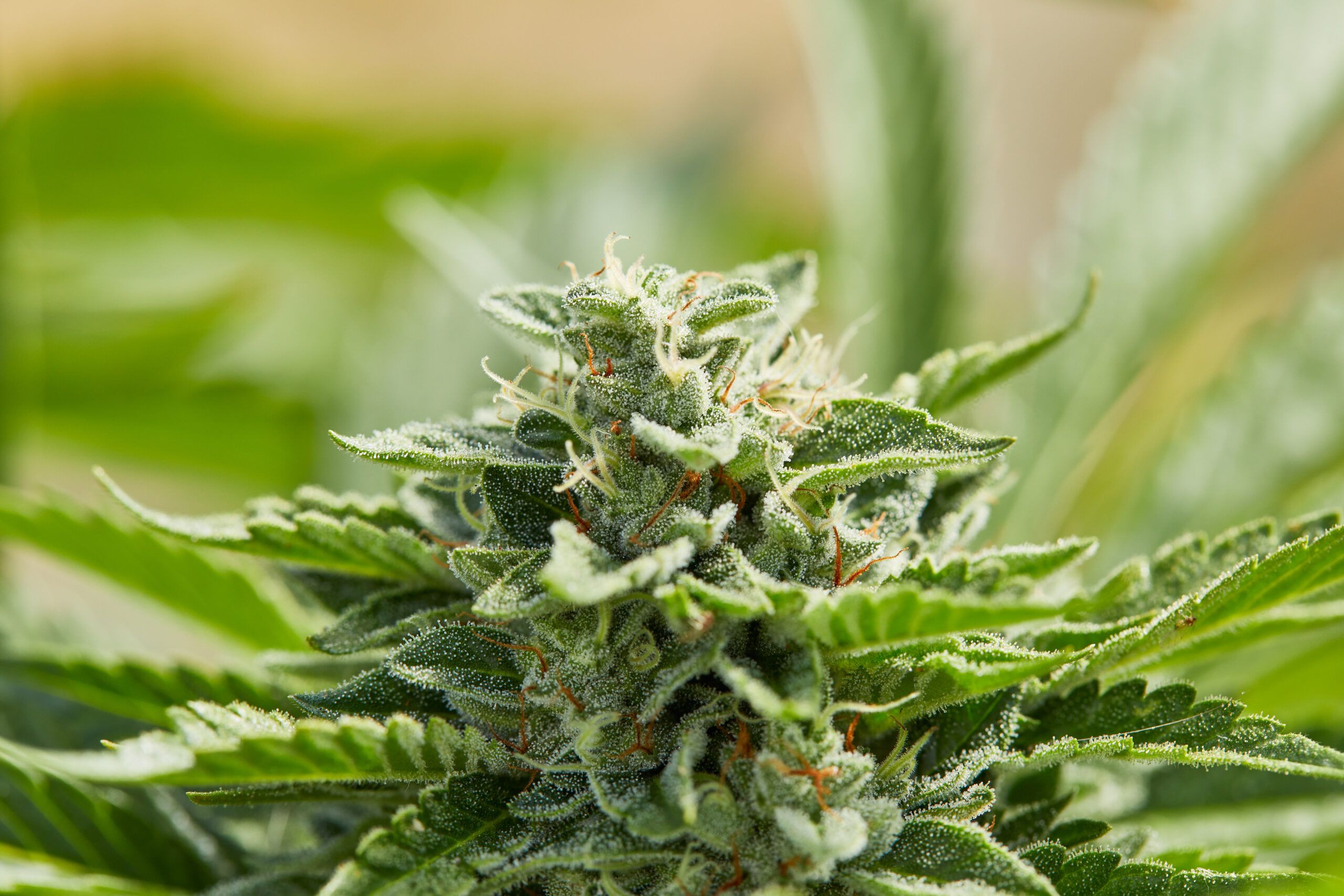When you grow cannabis, you want to keep your plants strong and healthy throughout every stage of the growing process, including the seedling stage. This stage can be especially vulnerable as it requires a lot of TLC for cannabis seeds to grow into a healthy plant.
But what does that TLC look like? What steps do you need to take to support your cannabis seedlings through the seedling stage and as they grow into mature plants? Learn how to care for your baby weed seedling to ensure it reaches maturity in the best way possible.
What happens during the seedling stage?
The growing process has four key stages: the seed germination stage, the seedling stage, the vegetative stage, and the flowering stage. Once the cannabis seeds germinate and are placed into their growing medium (like a potting mix), they start to root into the soil as the stem grows upward, sprouting two cotyledon leaves, which help the plant absorb light and continue to grow.
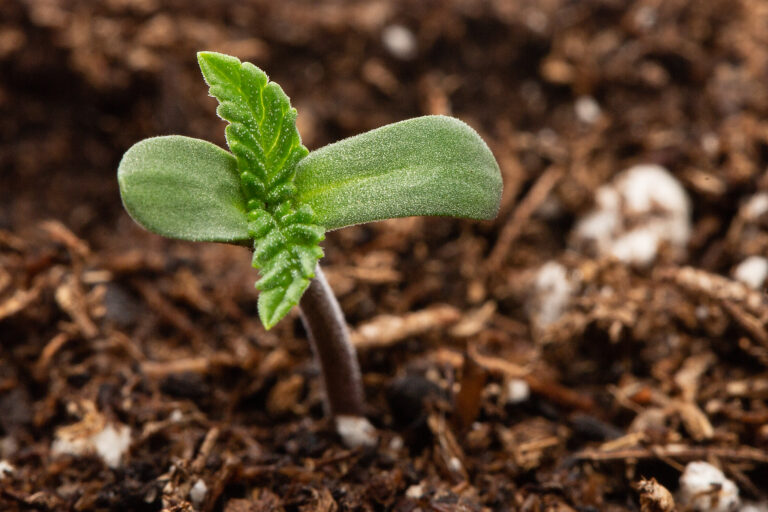 Photo by: Gina Coleman/Weedmaps
Photo by: Gina Coleman/WeedmapsImage lightbox

As the plant grows, it starts to produce more fan leaves — and those leaves continue to develop the ridged edges that you'll immediately recognize as the marijuana plant. As more leaves grow, more ridged edges develop until finally, the plant is fully grown, with each leaf reaching its maximum number of edges, which can be anywhere from 5 ridges per leaf to upwards of 10.
This stage—moving from germinated cannabis seeds to plants with the maximum number of ridged edges per leaf—is the seedling stage. It's an incredibly important part of the growing process. Since the cannabis plant is still young and fragile, proper care is essential to lay the foundation for a healthy mature plant.
Best practices when caring for your cannabis seedling
So, what exactly goes into the care needed for a healthy seedling? Here are the key things to know when it comes to caring for your cannabis seedlings.
Choose the right container
Your cannabis seedling needs space to grow. But too much space and too little space can both create problems for your plant. If you try to grow your seedling in a container that's too large, the root system won't be able to absorb all the water in the soil. If you start growing your seedling in a container that's too small, the roots won't have space to extend and will start to wrap around themselves, which will also impact their ability to absorb water.
Choosing the right pot is an essential part of caring for your growing plant. You need a pot that's going to give the root system space to grow but not so much space that the roots won't be able to absorb all the water in the soil. You should also make sure the pot has drainage holes to get rid of any excess water that could overwhelm the plant.
Be mindful of how much you water your cannabis seedlings
When it comes to watering your seedlings, you want to give them the water they need to thrive. However, too much water can actually have a negative impact on the growth process, so it's important to be mindful of how much you water your seedlings.
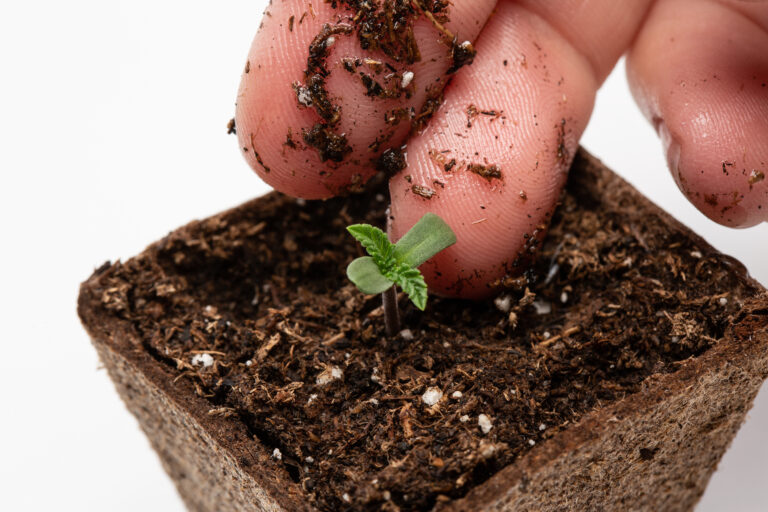 Photo by: Gina Coleman/Weedmaps
Photo by: Gina Coleman/WeedmapsImage lightbox

The root system of a seedling isn't elaborate; the roots are small and don't need much water to grow. Misting the plants with water once or twice a day should be plenty to give them the hydration they need to grow. If you're not sure how much water is too much, keep in mind that you want the growing medium (AKA the soil) to be damp and moist, not soaked and oversaturated.
Know the signs of nutrient deficiencies
A nutrient deficiency can cause serious issues for your growing plant, so part of proper care is knowing how to spot the signs of a nutrient deficiency. Nutrient deficiencies can come from a variety of places. “Hot” potting mixes that contain too many nutrients could cause nutrient toxicity. On the other end of the spectrum, under-watering can cause a deficiency in the key nutrients your plant needs to grow.
Some red flags that signal your seedling may have a deficiency in nutrients (or nutrient toxicity) include:
- Dark coloring (cannabis seedlings should be a vibrant shade of green)
- A burned appearance on the tip of the leaves
- A curling on the tip of the leaves
- Yellowing leaves
If you notice any of these issues with your plant, it could be the result of too many or too few nutrients. You'll need to adjust your growing strategy to support your plant's health.
Choose the right lighting
Like any plant, seedlings need light in order to grow and thrive, but not all light is created equal. If you want your seedling to grow into a healthy cannabis plant, you need to expose it to the right type of light.
If you're growing your seedlings outdoors, they'll need to be exposed to as much sunlight as possible. Keep them in the sun from sunrise to sunset; the more sunlight exposure they get, the better. But growing your seedlings outdoors can be tricky. Because you can't control sunlight, there's no way to ensure your cannabis seedlings are getting the light they need to grow properly. A cloudy day can prevent your seedlings from getting enough light and throw off your entire growth process.
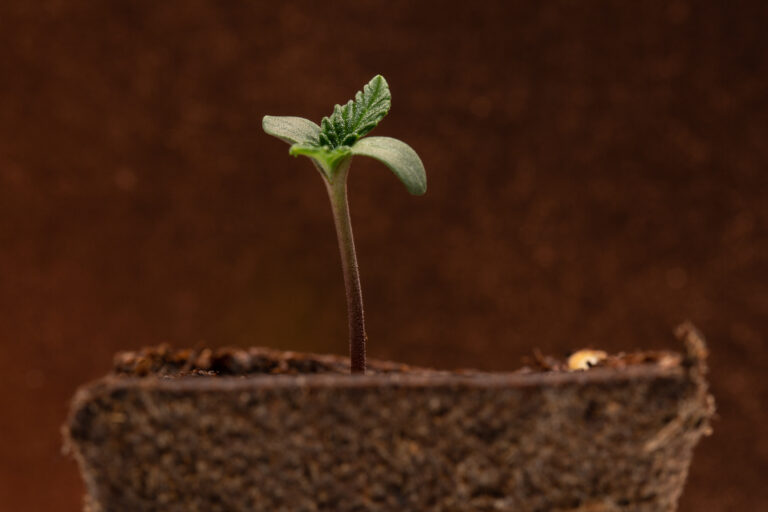 Photo by: Gina Coleman/Weedmaps
Photo by: Gina Coleman/WeedmapsImage lightbox

Growing your seedlings indoors with artificial light gives you more control over the process, making it easier to ensure your plants are getting enough light each day. If you're growing with artificial lights (compact fluorescent lights that emit cooler, blue spectrum light are especially effective), aim to give your plants 18 hours on and six hours off each day.
Keep your environment at the right temperature and humidity
Environmental conditions are essential to growing healthy cannabis seedlings, and some of the most important conditions to control are temperature and humidity.
The temperature in your grow environment shouldn't exceed 80°F, otherwise the seedlings may grow too tall. You should also plan on lowering the temperature at night to about 70°F. You should also aim to keep humidity in the grow environment at a higher level, typically around 70%. That way, the plants can absorb moisture from the environment to develop stronger roots without getting weighed down by over-watering.
Bottom line
Watching your cannabis seeds transform into seedlings is an exciting part of the growth process. Now that you know how to care for your cannabis seedling, you should have everything you need to transform your seedling into a mature, healthy, and flowering cannabis plant.
Written by Lesley Nickus | Featured image by Gina Coleman/Weedmaps

